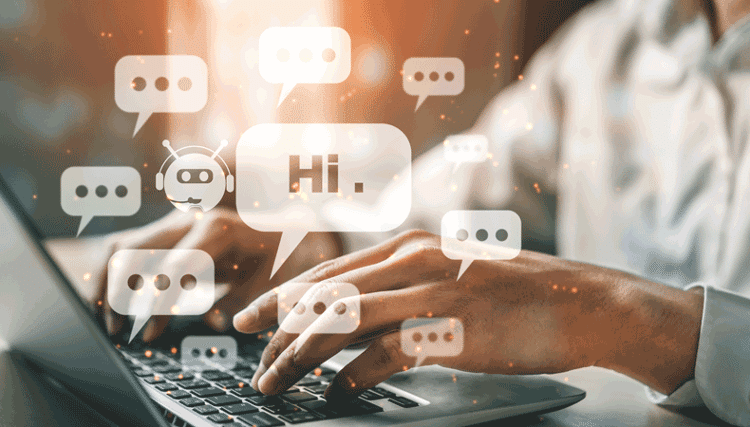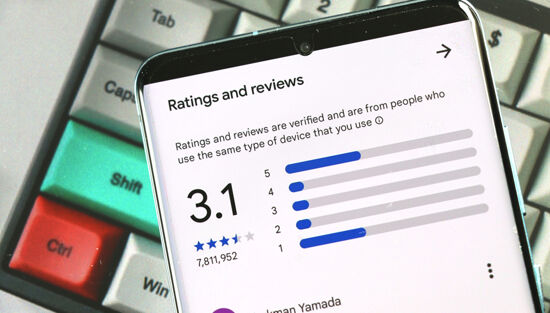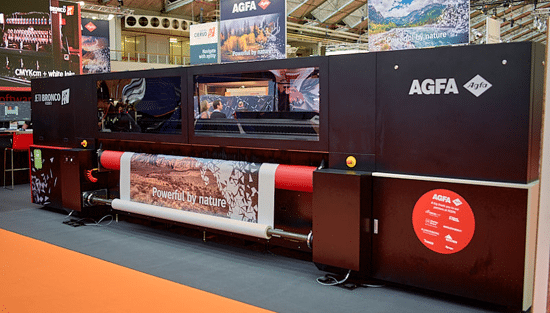How to integrate AI into your customer services

Chatbots are growing ever more helpful and sophisticated. What can they do for you, and why should print businesses embrace this customer-facing aspect of AI?
There was a time when a slightly frustrating exchange with automated customer service interfaces – better known as chatbots – was our only encounter with AI. Limited responses and endless loops often left people feeling they wanted to talk to a real person, but chatbots have come a very long way since those days. Now, they’re a part of everyday life, and have become more sophisticated, more interactive, and much more widespread.
Chatbots have evolved into powerful tools that streamline customer interactions, providing instant contact with companies and efficiently collecting details from users. As we delve into the world of AI-driven customer automation, it's important to understand the potential benefits of chatbots and how you can take advantage of them.
The growth of customer service automation
Chatbots have become synonymous with immediate customer service, offering quick responses and answers to simple questions. According to recent statistics, businesses are increasingly turning to chatbots, with over 67% of customers worldwide already using them for customer support. This surge in adoption underscores the effectiveness and efficiency of AI-driven solutions in enhancing customer interaction, and the improvement we’ve seen in them is a direct result of feedback from early users. It allows you to get service outside of business hours, and to input much of your data – account numbers, what you want to talk about – before you get to a real person, meaning you’re filtered to the right department.
AI chatbots can be transformative for businesses, providing an always-on source of customer service that is consistent, common sense and never gets tired or irritable
From the early, somewhat frustrating stages to the sophisticated conversational agents we have today, chatbots have become integral to customer service across numerous industries, including printing. The earliest chatbot dates from 1966, a program called ELIZA that attempted to mimic human conversation. While rudimentary, it provided the foundation for much of the work on AI chatbots that was to follow. Others, from Jabberwacky to ALICE built on that and paved the way for the chatbots we now see in everyday life, such as Siri, Alexa, ChatGPT and Cortana.
How AI enhances customer automation
AI goes beyond chatbots, offering a range of capabilities that can really improve customer automation, even if some examples still need some creases ironing out. From personalised interactions to data-driven insights, AI can revolutionise the way businesses engage with their audience. For a global business like FESPA, which translates its website into 36 languages, AI's ability to facilitate translation is a critical feature. It ensures seamless communication with a diverse audience, enhancing the customer experience. This kind of feature aligns with the needs of print businesses operating internationally.
AI can be a game-changer in customer service, providing insights into its various applications. From automated ticketing systems to predictive analytics, AI empowers businesses to deliver faster and offers more accurate support. For printers and small businesses, this means efficient handling of customer queries, issue resolution, and improved overall satisfaction. Think of the way a chatbot fields queries from customers and sends them down different pipelines as a kind of digital triage.
If you’ve closed the print studio after a hard day at work, a chatbot can provide customer services to clients across the world after the office has closed. If you sell your work online and think that many potential customers are abandoning their shopping carts before checking out, AI chatbots can provide prompts to users. Chatbots can contact those who haven’t completed their purchase to remind them of what they’ve got in their cart, perhaps incentivised with a discount.
Equally, a chatbot can analyse what people are browsing and make personalised, targeted recommendations, along the lines of ‘people who bought X also bought Y’. In that way they not only enhance the customer experience, but they also act as a digital salesperson for your business.
For print businesses, starting with chatbots provides a practical entry point to harness the growing power of AI
The more richly featured AI chatbots we see today can be transformative for businesses, providing an always-on source of customer service that is consistent, common sense and never gets tired or irritable. And when you have a customer that really wants to hear a human voice, your chatbot can gather all the key information you need ahead of a conversation.
Setting up a chatbot
There are several ways to deploy your own chatbot, with the option to buy off-the-shelf solutions, work with a developer who can create one for you (or adapt an existing product for your particular needs) or you can take on the challenge of building your own.
You’ll want to carefully consider the purpose and functionality of the chatbot. What do you want it to do? What things do you want yourself or your team to keep doing? What information will it need to be armed with? If you wish to make your own chatbot, there are drag-and-drop visual editors that can help you to do it, meaning you don’t need to be a coder or, in fact, know any programming language at all. There are plenty of options out there, from Zapier to Tidio, Hubspot to CustomGPT (see AI automation solutions for customer services, below). They’re largely intuitive, but usually include fees – you’ll want to work out if the ongoing cost will be offset by the customer service savings you can potentially make.
Beyond customer service automation
While automating customer service with chatbots is incredibly useful, it's only the beginning when it comes to leveraging AI for business optimisation. Many business leaders are considering ways in which AI can transform and grow their businesses, with everything from automating business processes to gaining insights through data analysis and engaging with customers and employees on a much deeper level on the table.
For print businesses, starting with chatbots provides a practical entry point to harness the growing power of AI. It can help save time and free up resources to allocate elsewhere. It can keep customers satisfied while you sleep. Embracing customer automation with AI is not just a step forward, it's a strategic move towards the digital future.
AI automation solutions for customer services
Zapier: An AI tool that helps you automate repetitive tasks between two or more apps from the 6,000 available on its platform.
Tidio: Interacts with customers using automated responses to boost productivity and improve customer experiences.
Hubspot: Marketing, sales and customer service software, including generating blog posts from product information.
CustomGPT: Creates personal chatbot expriences, knowledge bases and website content.
Become a FESPA member to continue reading
To read more and access exclusive content on the Club FESPA portal, please contact your Local Association. If you are not a current member, please enquire here. If there is no FESPA Association in your country, you can join FESPA Direct. Once you become a FESPA member, you can gain access to the Club FESPA Portal.
Topics
Recent news

The personal touch: visit Personalisation Experience’s SmartHub Conference 2025
Join the SmartHub Conference at Personalisation Experience next month to stay ahead of the latest tech and trends.

How to build brand trust using customer reviews
Reviews can benefit or damage your business’s reputation. From spreading the word to social proof, here is why reviews matter and what you can do to manage your customer reviews to improve your brand’s reputation.

Regulation guidance: Extended Producer Responsibility
Extended Producer Responsibility (EPR) is now in effect. What does it mean for those in the print industry? Sustainability consultant Rachel England outlines everything you need to know.

How to maximise the automation of your production workflow
Workflow automation has evolved beyond basic file prep, now encompassing job submission, prepress, and postpress. Printers automate to boost productivity, cut waste, and address skill shortages. Implementing tailored automation, from RIPs to MIS, optimises throughput and profitability, minimising human intervention.